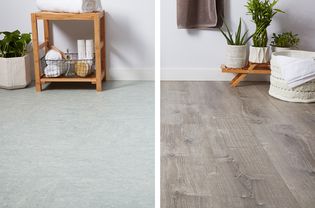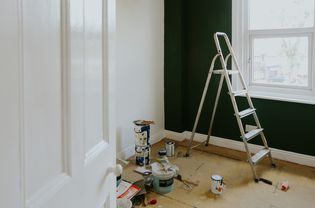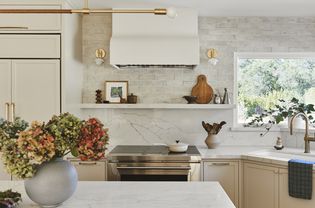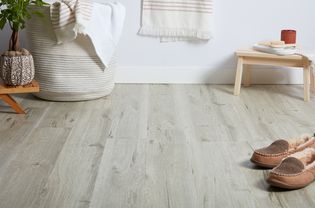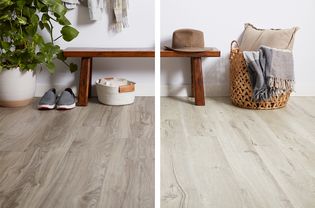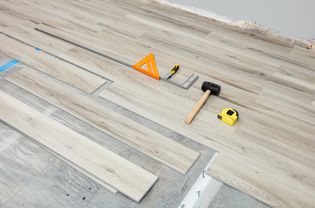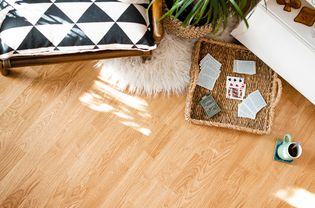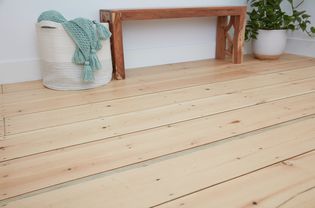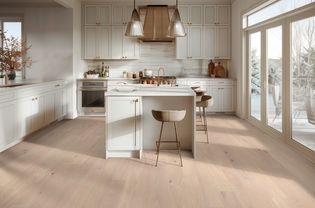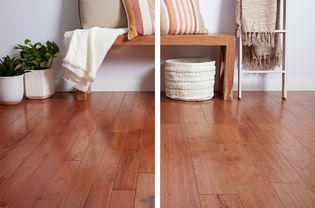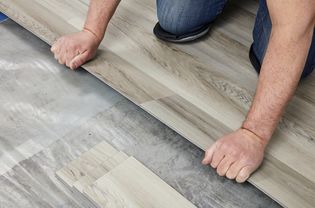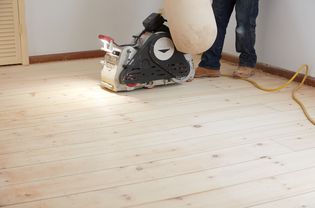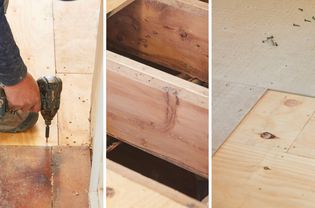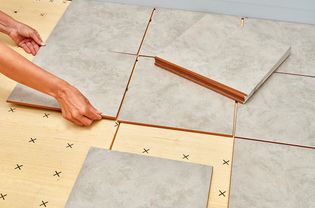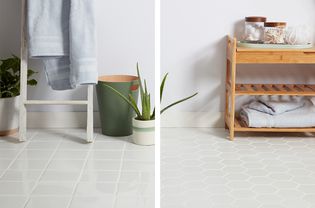Act as an expert content writer specialized in Interior Walls and Ceilings design, who speaks and writes fluently in French. Translate the article below into French. Continue writing until you finish translating the entire content from beginning to the end. Make sure the translation is linguistically accurate, and conveying the meaning, facts and figures of the original text. Make sure the content generated is well written and does not sound like a translation and reflects an awareness of the culture of French people. Don’t talk about Yourself or Your Experience. Don’t Self-reference. Don’t explain what you are doing. Write the content in HTML format and Keep the images and the structure of the article as they originally are. The article to translate:
For durable, economical, and attractive flooring that’s easy to install yourself, there are two top contenders: vinyl and laminate flooring. They’re equally easy to install, cost about the same, and can both look great—so, is there actually any difference?
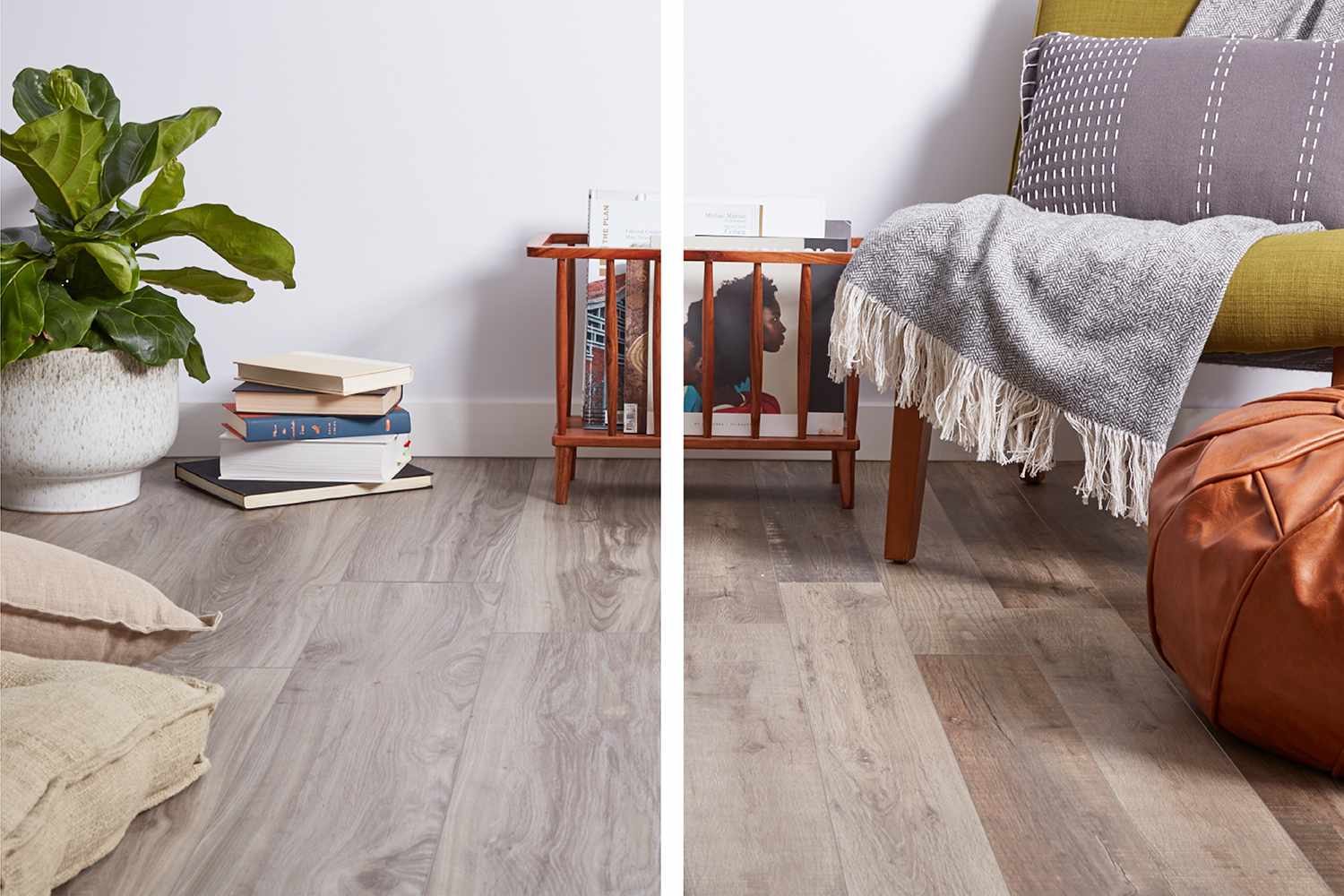
Margot Cavin / The Spruce
In short, yes. From moisture resistance and durability to maintenance, read on to learn the differences between laminate vs. vinyl flooring, plus some pros and cons that will help you choose between the popular flooring options.
Vinyl vs. Laminate Flooring: Major Differences
The key difference between vinyl and laminate flooring is in their materials. Laminate flooring is made from several layers laminated together, including a wood fiberboard core. Vinyl flooring—also made from several layers—is entirely synthetic.
Vinyl Flooring
| Item | Purpose |
| UV Acrylic Coating | Protects the floor from sun damage |
| Wear Layer | Protects against scratches |
| Print or Image Layer | The image or look of the flooring |
| PVC Layer | Provides stability and support |
| Core | The main body of the flooring made of PVC |
| Built-in Underlayment | Soft layer helps with uneven subfloors |
Common types of vinyl flooring include the following:
- Luxury vinyl planks (LVP)
- Luxury vinyl tiles (LVT)
- Sheet vinyl
The base layer of standard sheet vinyl and tiles is fiberglass coated in PVC and a plasticizer. The sheet is printed and embossed with a surface print layer, then multiple wear layers are applied with a layer of no-wax polyurethane on top.
With vinyl plank flooring, the core is a thicker, multi-layer PVC. Luxury vinyl flooring comes in planks or tiles that interlock side-to-side to form a floating floor. The thickness of vinyl flooring ranges from 1.5 mm for sheet vinyl, to 5 mm for luxury vinyl planks.
What Is a Floating Floor?
A floating floor is a floor system of components that lock together, forgoing the use of nails, glue, or other fasteners. A floating floor rests on top of the subfloor but does not become physically attached.
Laminate Flooring
| Item | Purpose |
| Wear Layer | Clear aluminum oxide layer to protect floor against scratches |
| Print Layer | The image or look of the flooring |
| Core Layer | The main body of the floor, made of highly compressed wood fibers |
| Built-in Underlayment | Soft layer helps with uneven subfloors |
Laminate flooring, which comes in plank style, looks similar to LVP. The critical difference? Its core is made from wood byproducts bonded with resins. The top surface is a hard, transparent plastic wear layer over the printed design layer, with an overall thickness ranging from 6 mm to 12 mm.
As with plank vinyl, a built-in underlayment is an option—which is increasingly popular amongst DIYers.
Appearance
Laminate is the best flooring option for appearance, as it can mimic hand-scraped hardwood, stone, ceramics, and other materials more realistically than vinyl.
Laminate Flooring
The thick top layer of laminate flooring allows it to be deeply embossed to have a realistic three-dimensional appearance and textured like the material it mimics.
Vinyl Flooring
Vinyl flooring isn’t necessarily known for its realistic looks, but LVP is the best of the bunch. Thicker solid-core vinyl flooring will look more like wood, since deeper embossing is achievable.
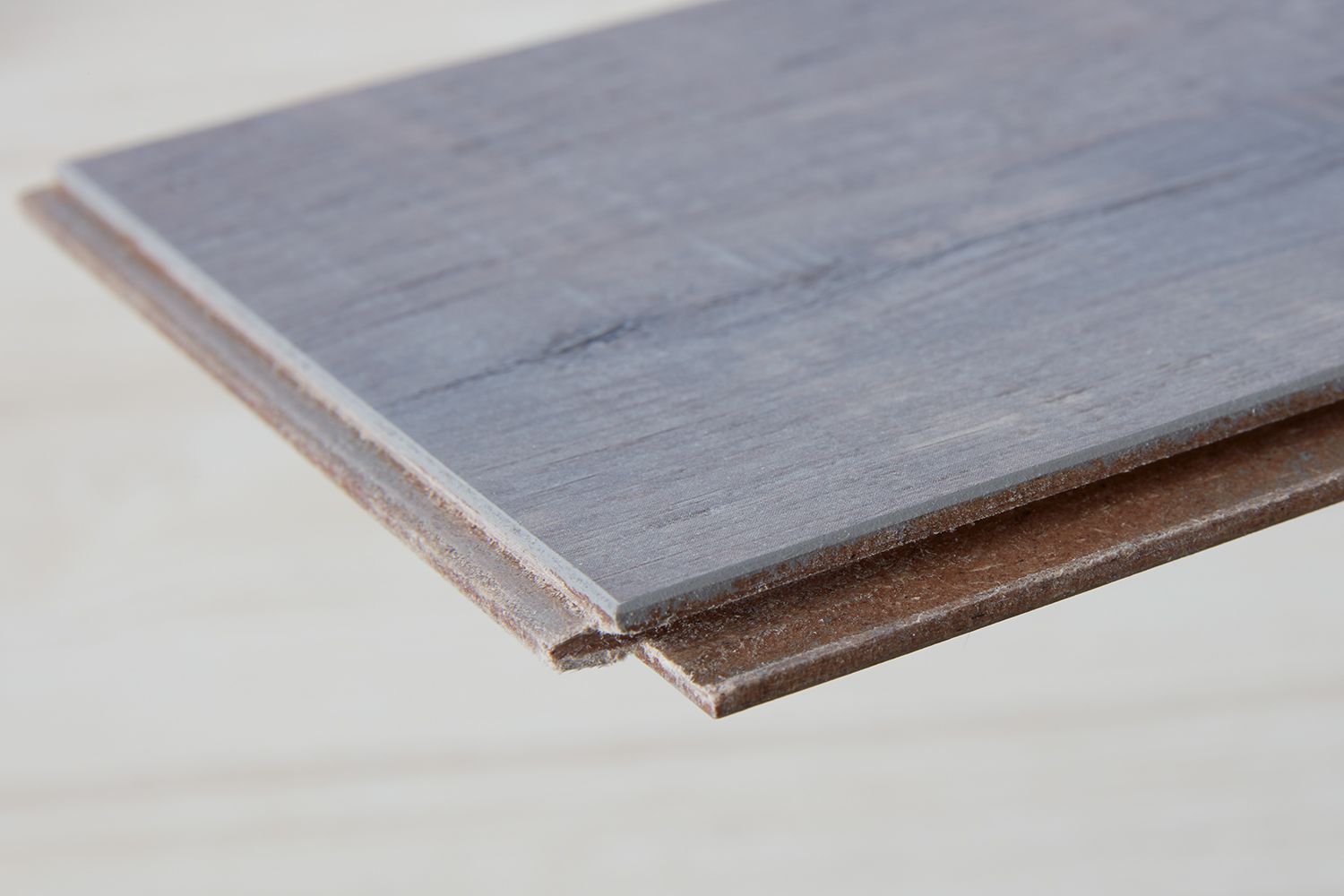
Margot Cavin / The Spruce
Cost
Vinyl and laminate flooring are competitively priced and less expensive than natural hardwood, engineered wood, and many types of ceramic or porcelain tile. However, sheet vinyl is the easiest on the wallet.
Laminate Flooring
Laminate flooring ranges from about $1.00 per square foot for 7 mm-thick planks to about $5.00 per square foot for 12 mm-thick planks.
Vinyl Flooring
Vinyl flooring can cost as little as $1.00 per square foot for thin, glue-down vinyl flooring. Prices rise to around $5.00 per square foot for LVP, and premium brands will cost even more.
Water Resistance
Vinyl flooring is more water-resistant than laminate—in fact, all types of vinyl flooring are made from 100% waterproof materials.
Laminate Flooring
Laminate flooring uses a fiberboard core made from wood, which softens and swells when exposed to water. It will stay warped even after it’s dried, and the wear and design layers could peel away after the core becomes waterlogged. Severely water-damaged laminate flooring usually needs to be replaced; it cannot be fixed.
Vinyl Flooring
While older forms of vinyl flooring may have a fabric or felt backing that can face water damage, modern vinyl flooring is made of 100% synthetic, waterproof materials. Luxury vinyl flooring can be fully immersed in water for long periods, dried out, and reused, completely unaffected.
Warning
Just because a flooring material is waterproof, doesn’t mean the structural elements below are protected. If possible, water should always be removed immediately to avoid damage to the subfloor.
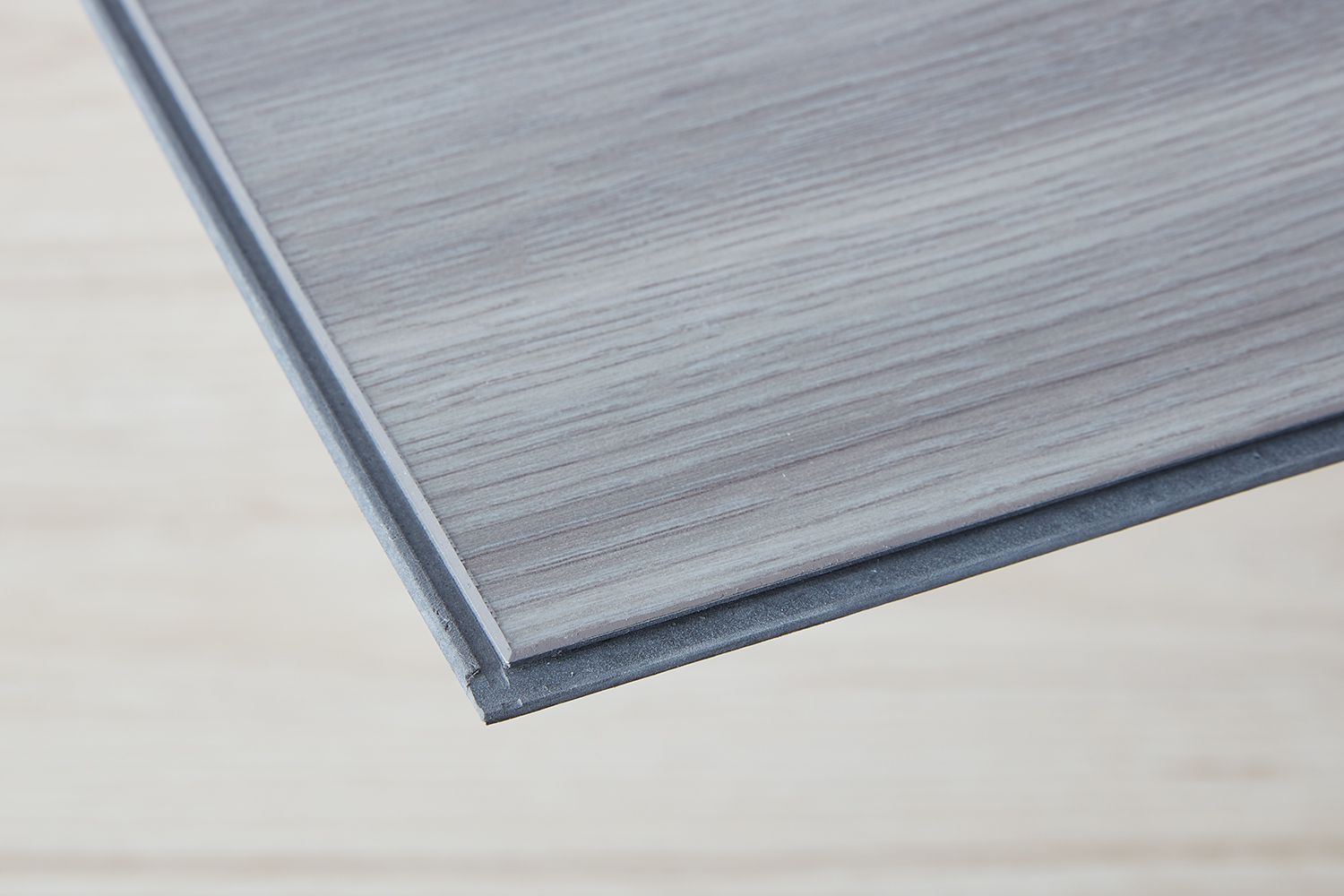
Margot Cavin / The Spruce
Heat Resistance
Both materials somewhat tie in heat resistance and can be laid over radiant heat flooring at temperatures of up to 80°F. However, vinyl won’t shrink or expand as drastically as laminate in extreme temperature fluctuations.
Laminate Flooring
Laminate flooring’s top layer could burn if an extremely hot object drops onto the surface. However, laminate distributes radiant heat more efficiently than vinyl. Laminate expands and contracts, and cannot tolerate constant temperature changes in a room.
Vinyl Flooring
Like laminate, vinyl flooring can easily scorch if an extremely hot item drops onto the surface—but normal temperature fluctuations don’t affect vinyl in the way they do laminate floors.
Care and Cleaning
Vinyl flooring is the easiest to clean, allowing for wet mopping while laminate does not.
Laminate Flooring
Laminate flooring is best cleaned first with dry methods, such as a dry mop or broom. If you need to wet-clean laminate flooring, use a mop that feels almost dry to the touch.
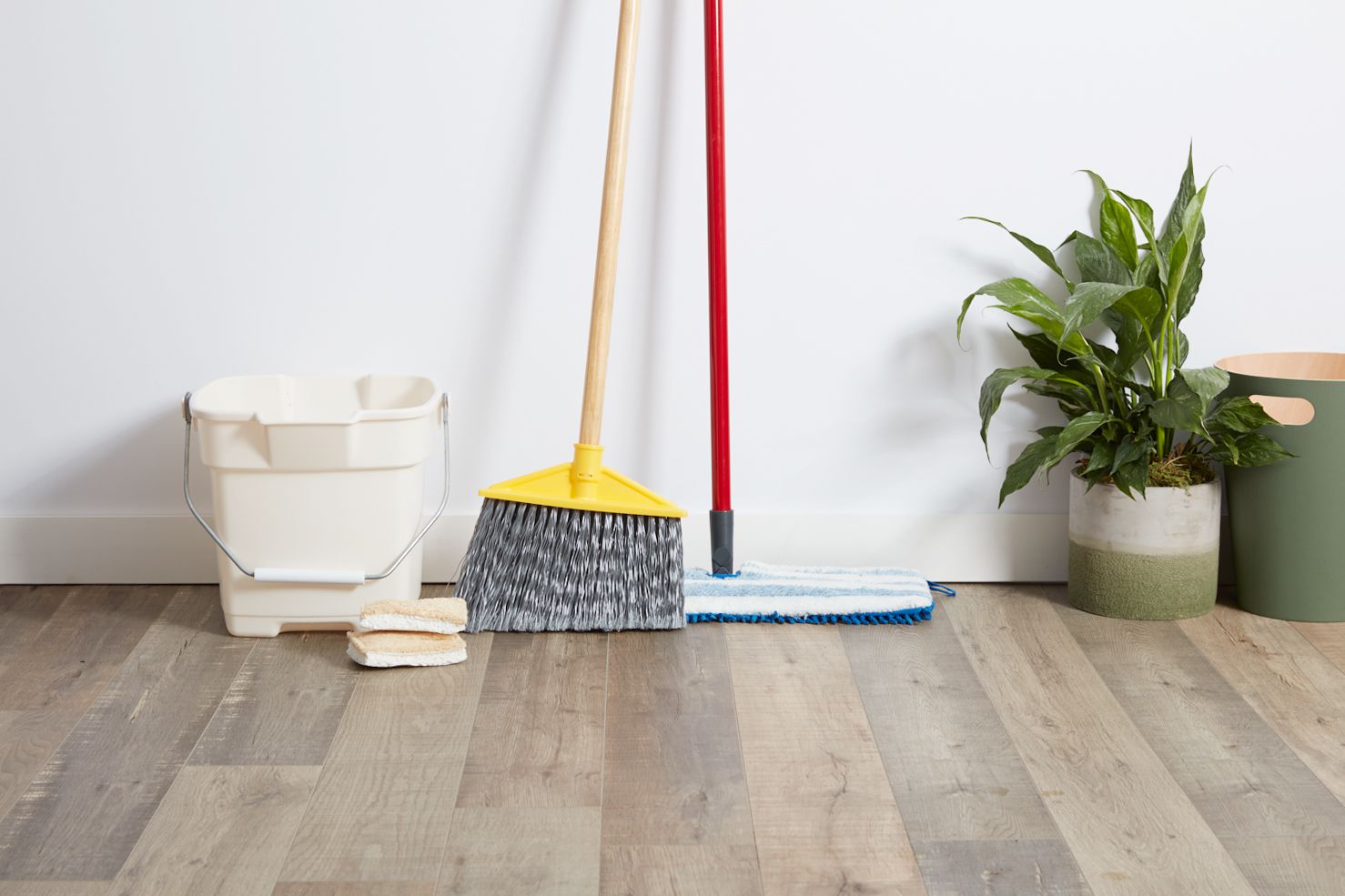
Margot Cavin / The Spruce
Vinyl Flooring
Vinyl flooring’s strongest feature is that it’s so easy to look after. Vinyl flooring in good condition can be wet-mopped and, if necessary, vigorously scrubbed with safe cleaning products.

Margot Cavin / The Spruce
Durability and Maintenance
Vinyl is more durable than laminate flooring. It’s even used in commercial settings, where durability and maintenance are top priorities.
Laminate Flooring
Laminate flooring is durable and low-maintenance. But if laminate is exposed to water or the top wear layer is damaged, the floor can start to delaminate and cannot be repaired. Once delamination starts to happen, the top layers begin to peel up and can allow water to enter the lower layers.
Vinyl Flooring
Vinyl flooring is a tough flooring material that stands up to high-traffic demands. Thin vinyl flooring is made with a single cohesive layer of PVC, so it has a slight advantage over thick vinyl flooring with underlayers, which could potentially delaminate over time.
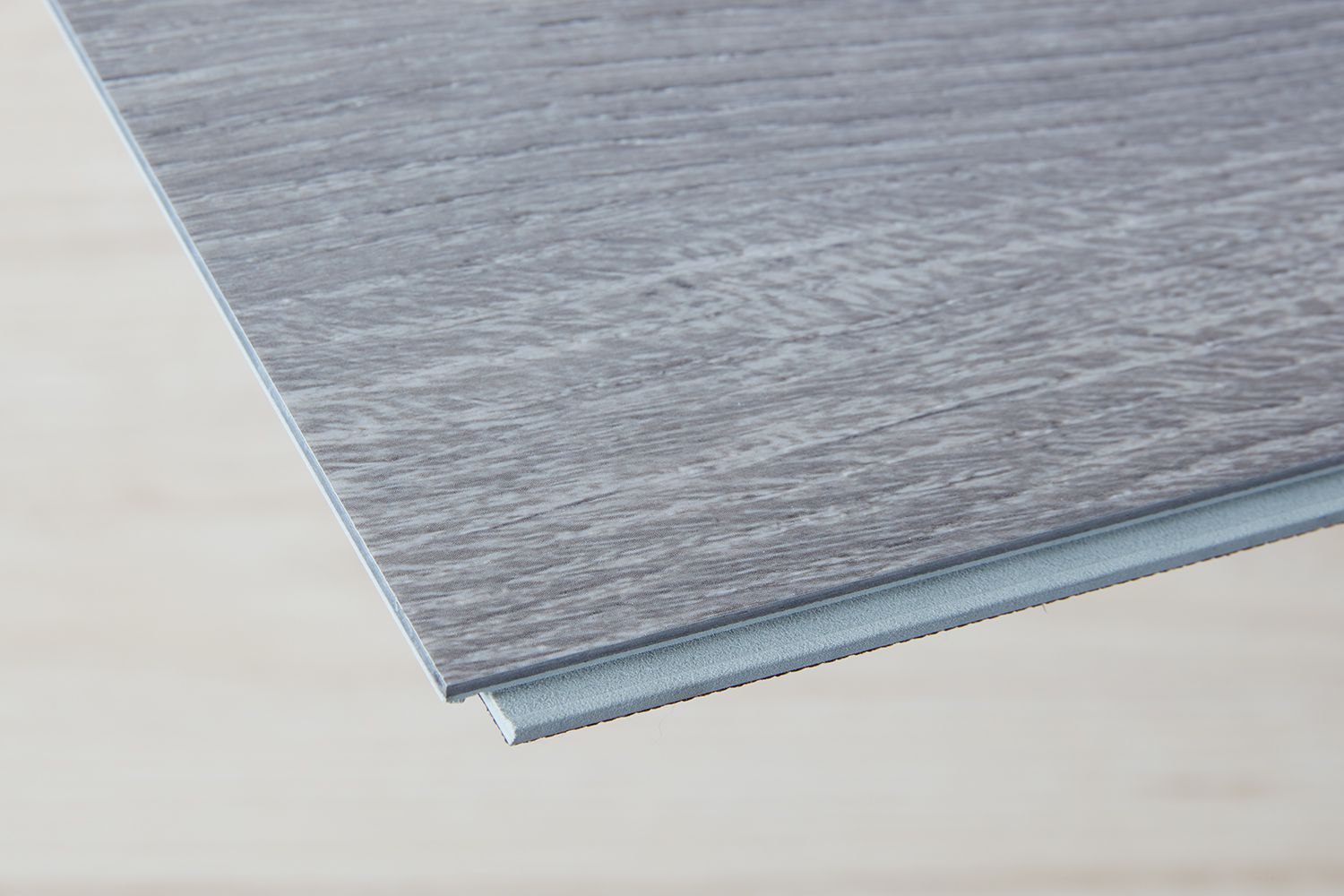
Margot Cavin / The Spruce
Installation
The ease of installation of vinyl vs. laminate flooring is similar. Vinyl or laminate planks are easier for a DIYer to install than sheet vinyl, but vinyl needs fewer tools than laminate.
Laminate Flooring
A circular saw, table saw equipped with a fine-tooth blade, or hand saw must be used to cut laminate planks. Use a a click-and-lock installation method to lay laminate flooring, fitting the tongue of one plank into the groove of another at an angle, then folding the first plank down to pull the boards together and close the seam.
Vinyl Flooring
Vinyl planks also use a click-and-lock method of installation. However, vinyl flooring planks can simply be scored, bent, and cut with a utility knife.
Sheet vinyl flooring does have its disadvantages, though. It’s large, heavy, and challenging to cut, and often considered too difficult for the average DIYer to install.
Lifespan
Laminate and vinyl flooring have similar lifespans if properly cleaned and cared for, but the lengths of their warranties can vary.
Laminate Flooring
Laminate flooring warranties typically range from 10 to 25 years, but this is dependent on a rigorous maintenance schedule.
Vinyl Flooring
Warranties on luxury vinyl flooring often range up to 20 years.
Comfort & Sound
Both laminate and vinyl flooring can be quiet and comfortable to walk on, but laminate flooring can feel more pleasant than vinyl when combined with foam or felt underlayment.
Laminate Flooring
Though laminate flooring does not feel like wood, it feels warm underfoot, mostly so with a premium-quality underlayment. However, it’s common to hear people walking on laminate, especially if they wear heels.
Vinyl Flooring
Vinyl floors feel cold and hard on the feet, especially when installed over concrete or ceramic tile. However, vinyl flooring is quiet and you rarely hear people walking on the material.
Resale Value
Quality laminate flooring and vinyl flooring lend comparable value to a home. Neither brings the high-value prestige of hardwood, designer ceramic tile, or natural stone floors—but they also won’t typically put off potential buyers.
Laminate Flooring
Premium laminate flooring can lend extra resale value to a home, as long as it’s relatively new and in good condition.
Vinyl Flooring
Major luxury vinyl plank flooring brands will bring decent resale value to a home. However, cheap vinyl flooring could be seen by buyers as a project they’ll have to tackle.
Environmental Impact
Neither laminate nor vinyl flooring is very environmentally friendly. Laminate flooring has a small advantage thanks to the natural wood content of the fiberboard core. However, neither compares to the eco-friendly nature of natural wood, linoleum, or bamboo floors.
Laminate Flooring
Some laminate flooring manufacturers offer products that qualify for LEED MR4 (Recycled Content) by using recycled wood. However, this flooring type still relies on the use of a plastic surface layer and a chemical-heavy melamine resin for core levels.
Vinyl Flooring
Vinyl flooring has improved its green status in recent years, with some manufacturers offering products that achieve a LEED credit EQ4.3 for Low-Emitting Material. However vinyl does not decompose in landfills, recycling is usually not an option, and it can produce toxic chemicals when burned.
Stain Resistance
Laminate and vinyl flooring are both stain-resistant, thanks to their treated wear layers.
Laminate Flooring
The top layer of laminate flooring is a clear aluminum oxide layer that is superior for stain resistance.
Vinyl Flooring
Quality vinyl flooring is coated with a transparent urethane layer that provides excellent stain resistance.
Recommended Installation Areas
Vinyl can be installed throughout the home, while laminate should only be used in certain areas.
Installation Areas: What Is Better?
Vinyl outperforms laminate in water resistance, making it a go-to for areas that are prone to water and moisture exposure.
| Installation Areas | Laminate Flooring | Vinyl Flooring |
|---|---|---|
| Bathroom, Full or Partial | No | Yes |
| Powder Room | Maybe | Yes |
| Kitchen | Maybe | Yes |
| Dining Room | Yes | Yes |
| Living Room | Yes | Yes |
| Bedroom | Yes | Yes |
| Home Office | Yes | Yes |
| Mudroom | No | Yes |
| Basement | No | Yes |
Which Is Better: Laminate or Vinyl Flooring
When it comes to laminate vs. vinyl flooring, one is not any better than the other and each has its place. Vinyl flooring is best for laundry rooms, wet bathrooms, and mudrooms because of its moisture resistance. For dry areas, laminate flooring works well, has a generally better appearance, and has more styles to choose from.
Laminate Pros and Cons
-
Realistic appearance
-
More environmentally friendly
-
Warm and comfortable to walk on
-
Better resale value
-
Not water-resistant; can only be used in certain rooms
-
Prone to peeling
-
Warps when exposed to moisture and temperature changes
Vinyl Pros and Cons
-
More budget-friendly
-
Completely water-resistant
-
Easier to clean and maintain
-
Very durable
-
Does not change shape in temperature fluctuations
-
Sheet vinyl difficult to install
-
Non-recyclable, toxic materials
-
Less style options available
-
Older options can decrease home value
Top Brands
Laminate Flooring
- Dream Home (Lumber Liquidators / LL Flooring)
- Pergo
- QuickStep
Vinyl Flooring
- Armstrong
- Mannington
- Shaw
-
How do I choose between laminate vs. vinyl flooring?
When choosing between laminate and vinyl flooring, you’ll want to consider where you are installing the new floors, as laminate flooring comes in more style options but is not waterproof, and therefore not a great choice for bathrooms or laundry rooms.
-
Which is more budget-friendly, vinyl or laminate?
Vinyl and laminate flooring are similarly priced, though sheet vinyl is sometimes slightly less expensive. Luxury vinyl options can be much more expensive than laminate.
-
Which is more resistant to scratches, laminate or vinyl?
Because of the multiple wear layers underneath its top coating, vinyl flooring is considered more resilient and resistant to scratches than laminate.
-
How can I tell if my existing floor is laminate or vinyl?
You can tell if your existing floor is laminate or vinyl by looking at the thickness. Laminate is generally thicker. Additionally, vinyl is waterproof while laminate is not. Finally, laminate will feel warmer and softer while vinyl can feel cold and hard.





